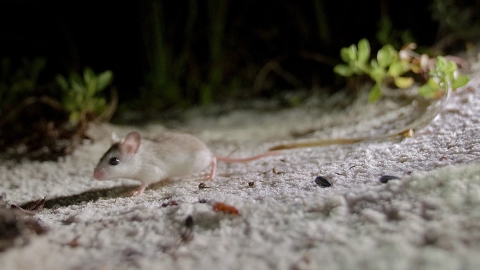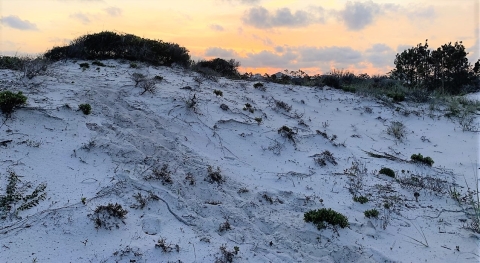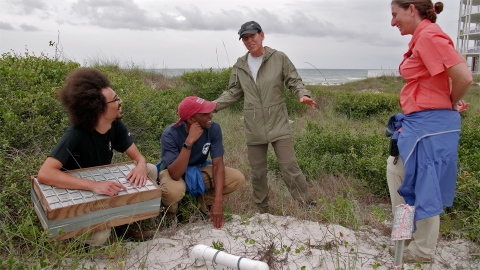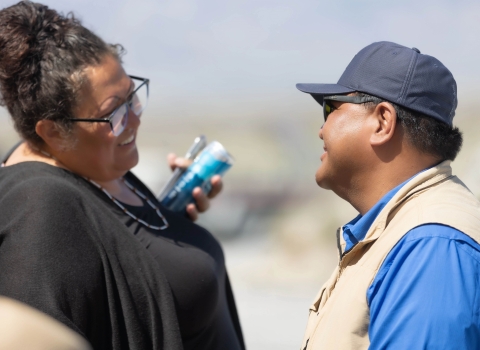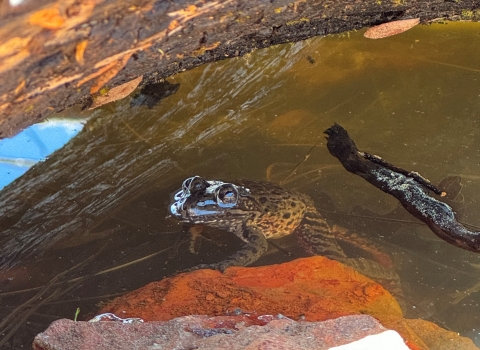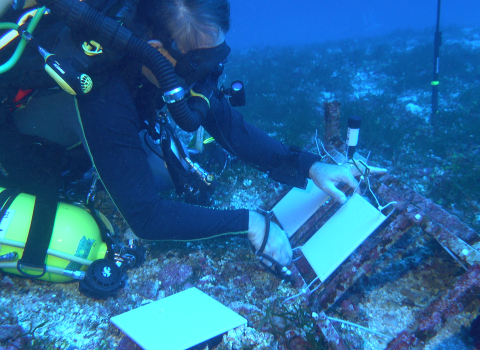Florida’s beach mice play an important role in beachfront health, and we offer technical assistance to coastal property owners in Florida in ways designed to bolster their property against hurricanes and also help conserve threatened and endangered beach mice.
Kristi Yanchis and Billy Brooks are the Service’s lead biologists for providing that technical assistance. They provide guidance on things such as approaches for dune restoration and techniques for establishing dunes, planting dune vegetation and where to locate beachside structures to help ensure dunes provide maximum protection for them. Much of that guidance is taken from beach mice habitat management plans the Service developed with partners that include best management practices.
Kristi is based in Panama City and focuses on Florida’s Gulf Coast. When talking to beachfront property owners she stresses the vital ecological roles beach mice play in promoting the health of our coastal dunes and beaches—and in turn, their property.
“They may not understand why we’re trying to save a nocturnal rodent that they never see,” Kristi says, “but they understand the need to maintain strong, healthy dunes to protect their homes. I just make beach mice conservation the catalyst for helping them understand the connection.”
Beach mice provide outstanding ecological value. They dig and use burrows within their home range. These burrows aerate the dune substrate and encourage deep rooting of dune plants. Beach mice also eat a variety of coastal plants, including seeds and flowers, which helps scatter these seeds, promoting new growth that helps stabilize the dunes, making them more secure during storms and protecting the coast from erosion. Another benefit is that beach mice eat insects that damage coastal plants.
Their predators include foxes, bobcats, owls, and feral cats. Other threats include beachfront development and habitat fragmentation.
Billy is based in Jacksonville and his focus is on Florida’s Atlantic Coast. He says, “We promote nature-based landscaping and tie in the value of keeping the dunes healthy to protecting their homes and businesses.”
Service Biologist Sandra Sneckenberger, based in Vero Beach, has worked on beach mice related projects since 1998. Due to her expertise, she sometimes supports Billy’s and Kristi’s efforts. Sandra said, “One of our key messages is if you’re a homeowner or a landowner and you have beach mice or coastal dunes on or around your property, if a hurricane or tropical storm comes by and you have intact, vegetated, healthy dunes, your property is at less risk than if you don’t.”
Florida beach mice habitats are primarily found on the Atlantic and Gulf barrier islands in and around coastal dunes along Florida's Panhandle and Atlantic Coasts. There are four subspecies of beach mice on the Gulf Coast, and we protect three as endangered: Perdido Key beach mice, St. Andrews beach mice, and Choctawhatchee beach mice. Santa Rosa beach mice aren’t listed. There are two subspecies on the Atlantic Coast: Southeastern beach mouse (threatened) and Anastasia Island beach mouse (endangered).
Larry Williams, state supervisor of the Florida Ecological Services Office, says, “Kristi, Billy, and Sandra are doing a tremendous job of reaching out to private landowners to build relationships that help protect the dunes that help protect the people and structures on both coasts from the effects of hurricanes.”
Williams adds that the Service works closely with many partners, including the National Park Service, Florida Fish and Wildlife Conservation Commission, Florida State Parks, counties, and more to implement beach mouse conservation measures for public lands and private lands alike.
“And at the end of the day, our efforts culminate in a win-win for coastal residents and businesses, public land managers, beach mice and other coastal species,” he says.


